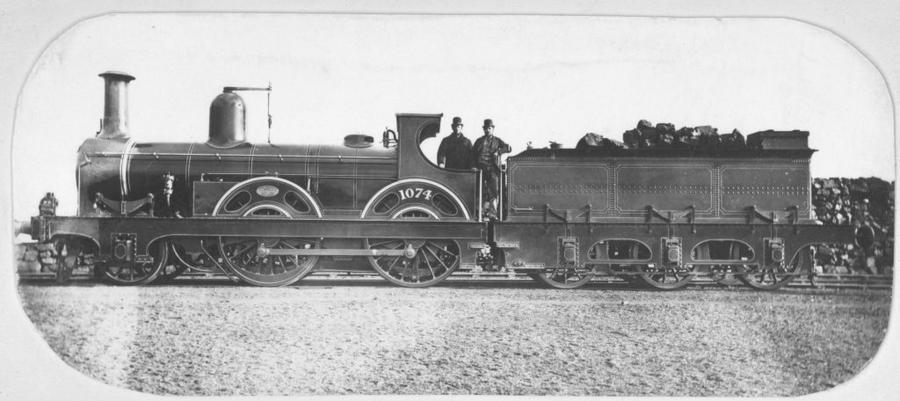Arthur Curtiss James was a prolific railroad tycoon – he owned roughly 40,000 miles of railroad track – about one-seventh of the entire railroad network in the United States when he died in 1941. He was one of the richest Americans in the 1920s and 1930s with a net worth of $60 million. That's equal to nearly $1 billion today.
He's been called an "unsung titan of the Gilded Age." James was publicity-shy, an avid yachtsman, property owner, and huge philanthropist.
Arthur James was born in 1867. He graduated from Amherst College in 1889. The following year, he married Harriet Parsons.
In 1909, James inherited a $26 million (more than $71 million today) fortune from his father, D. Willis James, who transformed the mercantile business Phelps, Dodge & Co into one of the biggest copper mining companies in the world. The elder James started the family's investment in railroads.
When Arthur James inherited his father's estate, he expanded the ownership stakes in the railroads in a huge way. He was the largest private owner of railroad stock in the U.S. He was integral in the completion of Great Northern's transcontinental railroad line. In fact, he drove the final, golden spike into the ground that completed the railroad track that ran from Chicago to Washington and Oregon and then south to San Francisco.
James was a big believer in the promise in California and because of that, bought a controlling interest in the Western Pacific railroad. Eventually, James' railroad holdings covered a quarter of the United States. He also had huge holdings in gold, silver, and copper mines.

(Photo by Edward Gooch Collection/Getty Images)
James was a master multi-tasker as well. He ran several corporations and still found time to sail on one of his three yachts – the 130-foot schooner Coronet, the 160-foot brigantine, and Aloha, a 206-foot sail and steam engine yacht. The Aloha was his prized possession. The Aloha was one of the largest yachts of its day in an era when large sailing yachts were unusual at that time because steam was the preferred type of engine. In 1921 and 1922 James sailed the Aloha around the world. He also sailed the Aloha to Europe several times in later years. Where most large yacht owners hired professional captains, James was the captain of the Aloha and he also personally managed and supervised the crew. James sailed more than 270,000 miles on his three yachts, according to logbooks he kept that were discovered after his death.
James was based in New York City, but he had a lifelong love of Newport, Rhode Island from sailing there from Manhattan when he was young. He and his wife Harriet bought Belvoir, a 28-acre estate on Newport's Beacon Hill in 1908. Beacon Hill is the highest point in south Newport. The James' had the house torn down to build Beacon Hill House. James also bought up the land around his estate over the next few years to create a 125-acre estate. Elsewhere in and around Newport, James developed a model Swiss farm called Surprise Valley on his estate that included homes for relatives and guests, livestock, and vegetable gardens. He also bought a small offshore island and lighthouse and created the Ida Lewis Yacht Club.
James and his wife built a home in New York City in 1914 that cost $1 million (equal to $27 million today). The home was located at Park Avenue and 69th Street. It was a four-and-a-half-story house on an 80-foot by 110-foot plot of land.
Despite being married, James was in a long-term relationship with Mabel Todd. Mabel was married to David Todd, a professor at Amherst College. Mabel and David appeared to have an open marriage as besides her affair with James, she also was in a much-publicized affair with Emily Dickinson's married brother Austin. They were involved for decades until Austin's death in 1895. Boxes of love letters between James and Mabel were discovered and donated to the archives of Yale University after her death.
James and Harriet did not have any kids but Harriet's sister Amelia had a daughter, also named Harriet. James cut their niece Harriet out of his will, reportedly because she was vocal about her distaste for his womanizing and his affairs. He reportedly told his niece, "I'm not going to leave you anything. I'm going to disinherit you."
James died in 1941 after a decade of illness. His wife had died just a few weeks before him. He left the bulk of his estate to the James Foundation, which distributed his money to dozens of hospitals, universities, and nonprofits over the next 25 years. He stipulated that there be no publicity around any of his charitable donations.
/2014/06/Jay-Gould.jpg)
/2014/01/corn.jpg)
/2014/09/John-D.-Rockefeller.jpg)
/2021/07/vincent.jpg)
/2015/05/thumb7.jpg)
/2021/03/Andrew-Carnegie.jpg)
/2015/03/GettyImages-98102880.jpg)
/2025/03/sami.png)
/2014/08/GettyImages-458847397.jpg)
:strip_exif()/2020/06/taylor.png)
/2009/12/Denise-Richards.jpg)
/2013/07/GettyImages-800836002.jpg)
/2021/06/nicolette.jpg)
/2020/04/Eddie-Vedder.jpg)
/2012/12/Brooke-Mueller.jpg)
/2022/04/Charles-Payne.jpg)
/2023/05/Jelly-Roll.jpg)
/2011/07/Drake-Bell-1.jpg)
/2022/11/charlie-sheen.jpg)
/2021/05/gary.jpg)
/2013/10/Jeff-Ament-1.jpg)
/2021/05/Jonathan-Knight.jpg)
/2011/07/Brandi-Glanville-1.jpg)